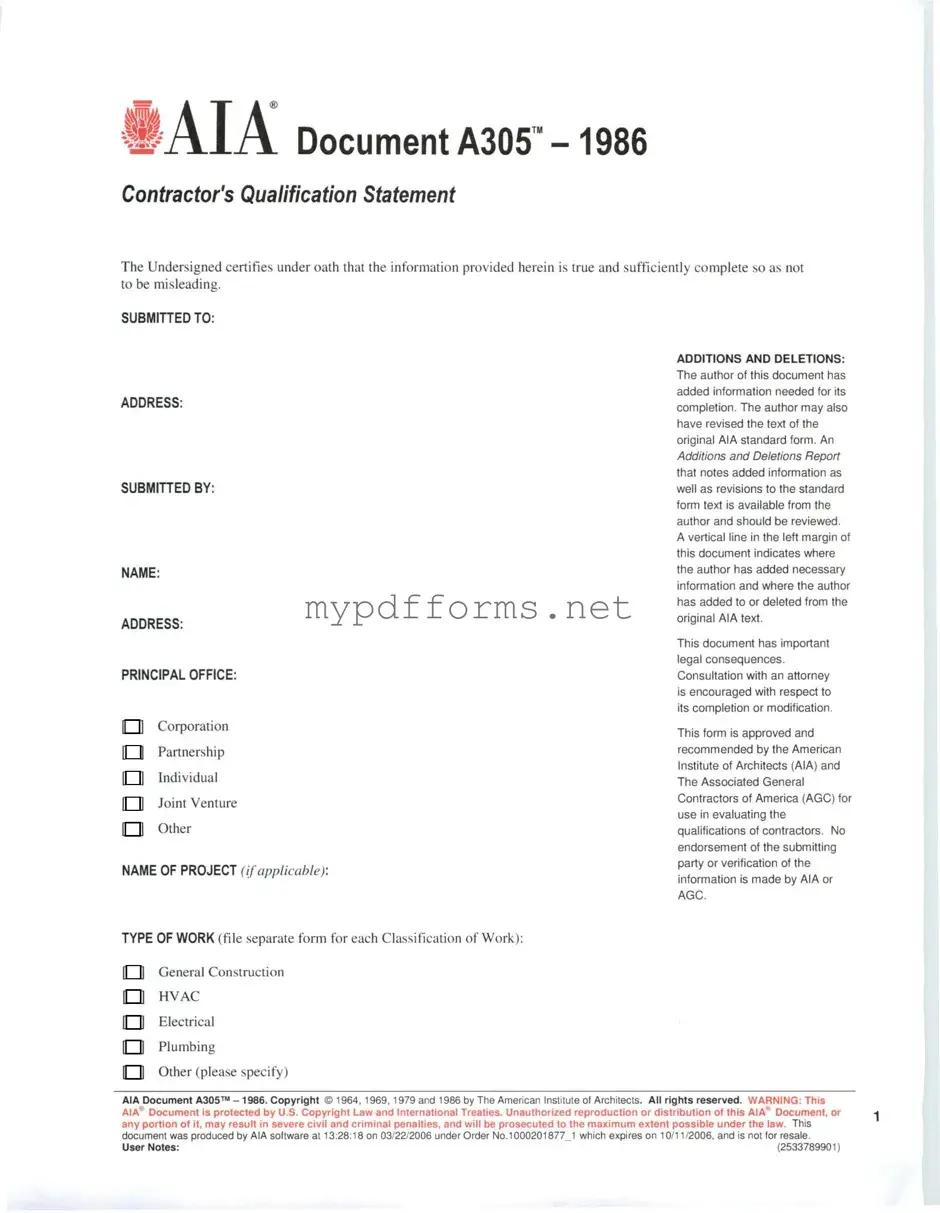The AIA A305 form is an essential tool in the construction industry, particularly for contractors seeking to provide a comprehensive overview of their qualifications and experience. This document serves as a standard format for contractors to disclose their financial stability, relevant project history, and overall capabilities. By filling out the A305 form, contractors can effectively communicate their expertise to potential clients and project owners, which is crucial for securing new projects. The form includes sections that require detailed information about the contractor’s business structure, previous work, and references, allowing for a thorough evaluation of their qualifications. Additionally, the A305 helps streamline the bidding process by presenting all necessary information in a clear and organized manner, making it easier for decision-makers to assess the suitability of contractors for specific projects. In a competitive market, the AIA A305 form not only highlights a contractor's strengths but also fosters trust and transparency in the contractor-client relationship.
